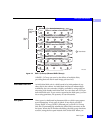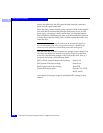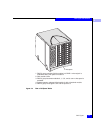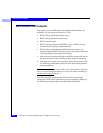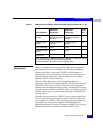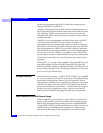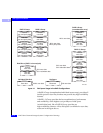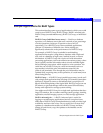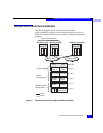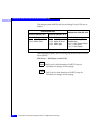
2
Guidelines for RAID Types
2-17
RAID Types and Tradeoffs
Guidelines for RAID Types
To decide when to use a RAID 5 Group, RAID 3 Group, mirror (that
is, a RAID 1 mirrored pair or RAID 1/0 Group), a RAID 0 Group,
individual disk unit, or hot spare, you need to weigh these factors:
• Importance of data availability
• Importance of performance
• Amount of data stored
• Cost of disk space
The following guidelines will help you decide on RAID types.
Use a RAID 5 Group (individual access array) for applications
where
• Data availability is very important
• Large volumes of data will be stored
• Multitask applications use I/O transfers of different sizes
• Good read and moderate write performance are important (write
caching can improve (RAID 5 write performance)
• You want the flexibility of multiple LUNs per RAID Group
Use a RAID 3 Group (parallel access array) for applications where
• Data availability is very important
• Large volumes of data will be stored
• A single-task application uses large I/O transfers (more than 64
Kbytes). The operating system must allow transfers aligned to
start at disk addresses that are multiples of 2 Kbytes from the start
of the LUN.
Use a RAID 1 mirrored pair for applications where
• Data availability is very important
• Speed of write access is important and write activity is heavy
Use a RAID 1/0 Group (mirrored nonredundant array) for
applications where
• Data availability is critically important
• Overall performance is very important



